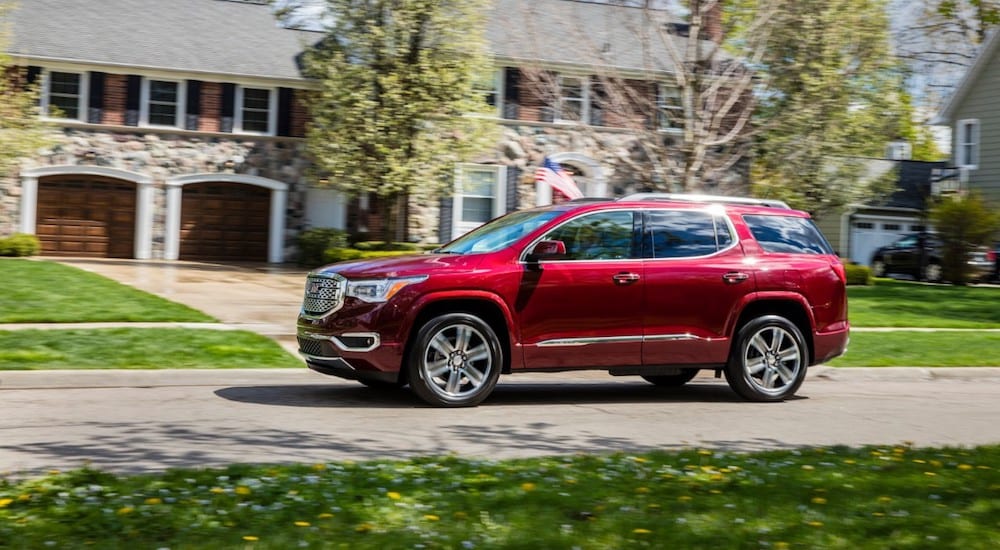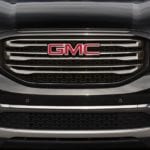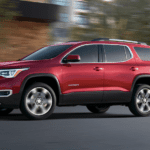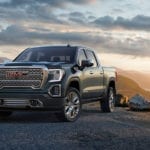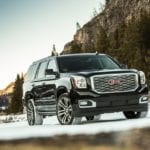The 2019 GMC Acadia vs 2019 Honda Pilot are both capable mid-size SUVs. Although they don’t run on the same truck chassis as the biggest full-size SUVs, these two seven-seat SUVs can handle whatever a family can throw at them. If your final selection comes down to these two vehicles, you’ve already made some difficult choices in thinning down a large field of vehicles. Although there are a lot of specifications that go into any purchase decisions, those with families are likely to consider the following:
- Does this car have the power to make sure I’m confident in any situation, including towing?
- Will the gas mileage break the bank or take my dollar further?
- Is this the safest vehicle I can get?
- Does this car fit my budget or have the luxury touches for which I’m looking?
If any car can hit the mark on the above, you should drive it off the lot. How will the Pilot and Acadia fair? Let’s find out.
Nice to Meet You
Introduced in the 2007 model year and positioned below the full-size Yukon and Yukon XL, the Acadia now slots between the Yukon and smaller GMC Terrain. Like it’s Chevrolet Traverse and Buick Enclave twins, the Acadia received its first full refresh in 2017. Unlike some other competitors in its class, the Acadia can seat five, six, or seven passengers with a wide array of configurations. The Acadia has been an extremely successful SUV for GMC and crossed the 100,000 model/year threshold in 2017.
The Honda Pilot has been around since 2002 and is on its third full redesign. It tops Honda’s SUV line-up above the CR-V and HR-V, but most closely aligns with the Odyssey minivan. The Pilot can seat seven or eight depending on if buyers opt for the second-row bench. One of the most successful mid-size SUVs ever, the Pilot has only sold less than 100,000 cars/year three times in 16 years.
Power
For family haulers, engine choice can be whittled down to a simple equation of power and torque – these SUVs need to be able to merge, pass, and accelerate with ease. The Pilot offers one engine, a 3.5-liter V6 good for 280 horsepower and 262 lb-ft of torque. Remote start is available on all but the lowest trim and the two highest trims, Touring and Elite, come standard with an idle stop/start system that will shut the engine off at stoplights. The Acadia offers two choices, a 2.5-liter 4 cylinder, and a 3.6-liter V6. The 4-cylinder gets 193 horsepower and 188 lb-ft of torque while the V6 will net 310 horsepower and 271 lb-ft of torque. The 4-cylinder uses start/stop technology at stop lights while the V6 uses cylinder deactivation under light loads to essentially function as a V4. Power wise, the Pilot’s V6 would fall in a middle ground between the Acadia’s two engines, with the Acadia’s V6 providing the best towing and highway acceleration. A choice of engines gives the Acadia the win.
Fuel Economy
With just one engine choice, the Pilot gets 22 combines piles per gallon, with 19 mpg city and 27 mpg highway ratings. The Acadia’s 4-cylinder engine will achieve a combined 23 mpg at 21 city/26 highway. The V6 isn’t far behind at 21 combined and an 18 city/25 highway ratio. Although the price at the pump may be similar for all three engines, buyers will be making fewer stops in the V6 Arcadia – it’s 22-gallon fuel tank bests the Pilot’s 19.5 gallon and the 4-cylinders 19gallon fuel tanks. When putting together, the V6 Arcadia will go 34 miles further on a tank of gas, which can add up over time.
Safety
If there is one area where mid-size SUV are lacking, it certainly isn’t safety. All of these cars are built with families as their top priorities, and it shows. The Pilot’s safety suite, aptly named Honda Sensing, comes with the following features:
- Collision Mitigation Braking System – This system helps bring the Pilot to a stop when it determines a collision is unavoidable, hopefully lessening damage and injury.
- Road Departure Mitigation – When the Pilot senses the vehicle leaving its lane or the road without signaling, it will provide steering assistance to get everything back on track.
- Adaptive Cruise Control – Instead of just maintaining speed, this system will adjust speed and maintain distance to the car in front of you for a comfortable experience in flowing traffic.
- Lane Keeping Assist – Although you should never take your hands off of the wheel, the Pilot makes steering a little bit easier by maintaining your space in the middle of the lane.
Not to be outdone, the Acadia is packed with safety features for those with both young and old children:
- Rear Seat Reminder – Rear seat reminder is activated after a second-row door is opened or closed during or just before a trip. When the Yukon XL is turned off, five audible chimes and a message in the driver information center in the middle of the dash remind you to check the rear seats
- Teen Driver – When this system is activated, all standard safety features remain locked in the on position. Parents can use a customizable pin to enable speed warnings, a speed limiter, and audio volume limiters. Even without the pin, teen driver produces report card-style data and will mute the sound system when the front seats are occupied but not buckled.
- Lane Change Alert with Side Blind Zone Alert – This feature provides alerts when the driver attempts to change lanes with a car in their blind spot.
- Cross Traffic Alert – When used in conjunction with the rear vision camera, this system helps ensure that no objects, children, or other vehicles are behind the vehicle.
It’s difficult to call a winner among all of these safety features; your dealer can help you select an SUV that’s the best match for your family’s needs.
Price and Warranty
In such a wide-ranging vehicle segment, a lot of your decision could come down to price. The 4-cylinder Arcadia starts at $30,195 and the Pilot starts at $31,450, so not much of a difference. Both models also top out around $47,000. With the top of the line Acadia, however, you’re getting the venerated Denali trim. Perhaps the most respected name in luxury, the Denali nameplate denotes a level of luxury not matched in many SUVs, especially under $50,000.
With the vehicles priced so closely together, one might hope that warranty levels could help make the choice easier. Amazingly, both cars offer the same warranty at 3 years/36,000 miles basic and 5 years/60,000 miles powertrain.
The Results
We don’t necessarily believe that it is up to us to push you towards either SUV. Both are quality vehicles made by respected manufacturers. Both have attractive combinations of features that appeal to slightly different buyers. What we covered here is by no means the exhaustive list of standard or available features for either vehicle. However, based solely on the comparisons presented here, the 2019 GMC Acadia is a better choice for mid-sized SUV shoppers than the 2019 Honda Pilot. We encourage you to head out to your local dealerships and try them both on for size.
